Fire Island is located on the lower right tip of the Archipelago. The western winds blow warm wind from
Friac’seoue into the Archipelago, and with those winds, animals and plants sometimes manage to make their way through. Fire Island, being furthest away from Friac’seoue, doesn't have as much diversity in terms of plants and animals; however, Fire Island is also one of the few islands in the Archipelago where
gillmen have not established a permanent settlement. The absence of gillmen activity, combined with the fertile ashes and land of the volcanic island, has made of Fire Island a paradise where nature is allowed to flourish untamed.
The island is roughly oval in shape: 13 kilometres long at the widest point in the N-S axis and 7 kilometres long at the widest point in the E-W axis. On the south-east section of the island, there's a fuming mountain: a volcano.
Fire Island is the second biggest island in the Archipelago. Its main defining feature it's the active volcano situated in the south-east part of the island. The volcano has been continually active, albeit at a very slow pace, for 100 years towards the sea depths. However, the volcano has had two bigger eruptions in those last 100 years.
Large sediments of volcanic rocks can be found in the first few kilometres surrounding the volcano and all the way into the coastline. The rest of the island is in a low incline, with a few older peaks, now weathered and covered by vegetation.
Flora
Plants are distributed unequally between the northwestern slope and the southeastern slope. The northwestern slope gets most of the precipitation, while the southeastern slope has little precipitation and has a stream of a slow but constant lava flow.
Another distinguishing feature of the landscape are the two recent lava eruptions: 80 and 15 years ago. The vegetation is distinctly different in both areas, showcasing the different stages in the colonization of the new land.
Plant species found in Fire Island
| Vegetation cover |
Typical plants |
Altitude (m) |
| Magrove swamp |
Sea roots, lizard berry tree, coral fern |
-1 to 5 |
| Grassland |
Iguana's nest grass, feather grass, land kelp |
5 to 20 |
| Lowland shrubland |
Arrow bush, soap leaves herb, singing fern |
20 to 100 |
| Woodland |
Red knobwood, moth tree, jelly moss |
100 to 250 |
| Mixed open forest and shurbs |
Yellow chin plum tree, poison arrow tree, rope makers |
250 to 400 |
| Closed forst |
Water flower tree, parrot knobwood, rope makers |
400 to 800 |
| Open forest and shrub |
Soap leaves herb, whale fin tree, small arrow bush |
800 to 1000 |
The fire mountain is a little over 1.200 meters in height, however, there is no vegetation above 1.000 meters.
The area where an eruption flowed through 80 years ago is nowadays covered mostly with a wide variety of shrubs and a few whale fin trees. The area where the lava flowed 15 years ago is now covered by a moss coveted by gillmen:
water moss .
Fauna
Fire Island is inhabited in its majority by insects and spiders, and the animals that eat them: birds and lizards. There is also a substantial amount of fishes which inhabit the mangrove swamp, of which kingfishers and egrets make easy prey
There is one hummingbird species in the island, which can be found nowhere else. This hummingbird drinks nectar from the wide variety of plants in the island, but has a favourite flower: that which the gillmen call soap leaves herb.
Gillmen harvest two resources from the island: water moss and volcanic rocks. Gillmen whose children have had children make the trip once a year towards Fire Island. There, they stay up to 3 weeks collecting the water moss and mining volcanic tuff and pozzolanic ash.
Water moss is one of the first plants to colonize volcanic rock and is used by
gillmen to prolong the amount of time they can stay out of the water for up to an extra day. When soaked with water, this moss is able to absorb large amounts of water without increasing much in volume. Later on, gillmen squeeze all the moisture from the moss above their heads and body to make sure their skin does not dry out.
Gillmen use
volcanic tuff as the building blocks for the construction of their houses, and pozzolanic ash as the main ingredient in the concrete that holds together the volcanic tuff.

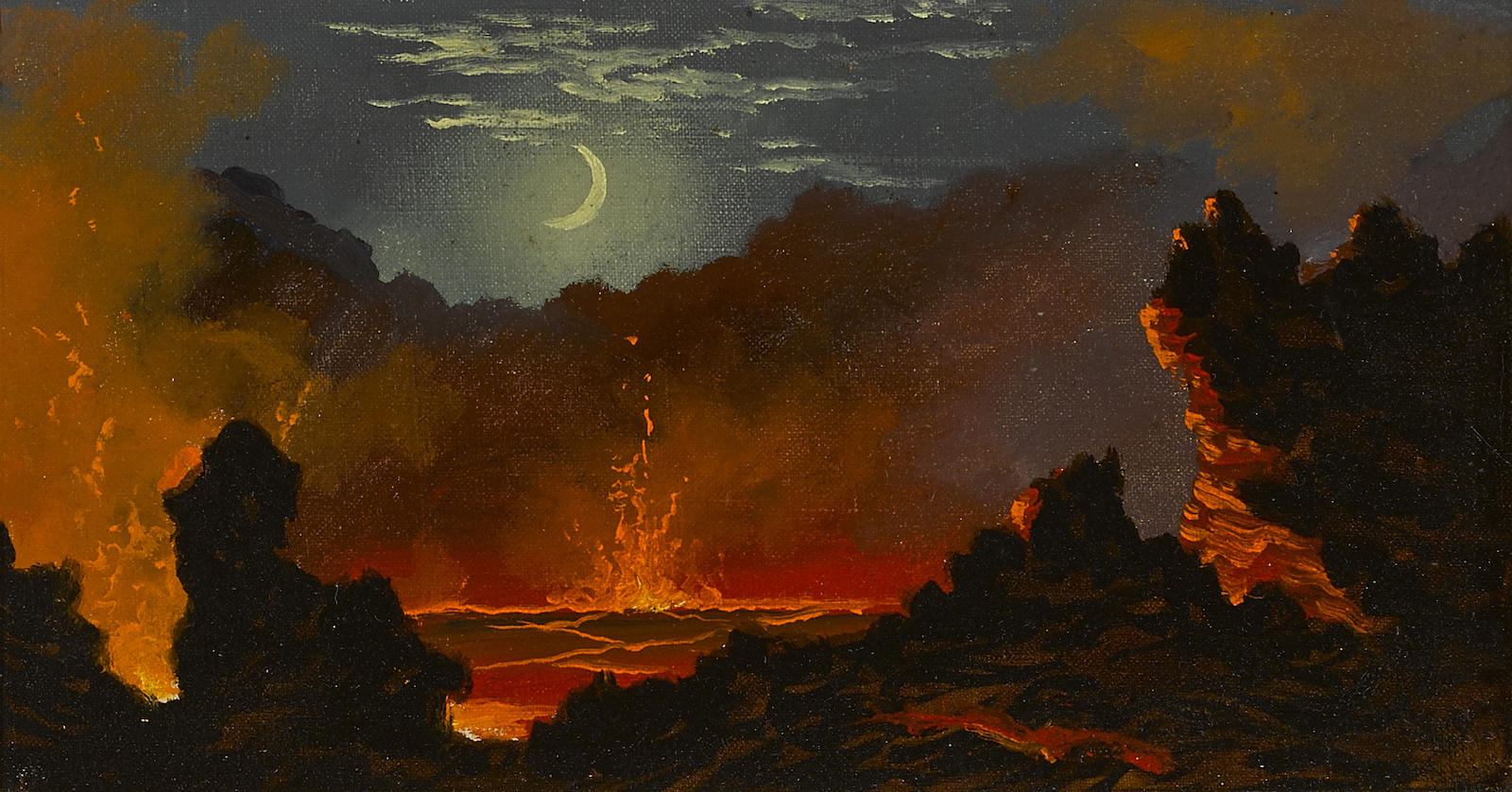
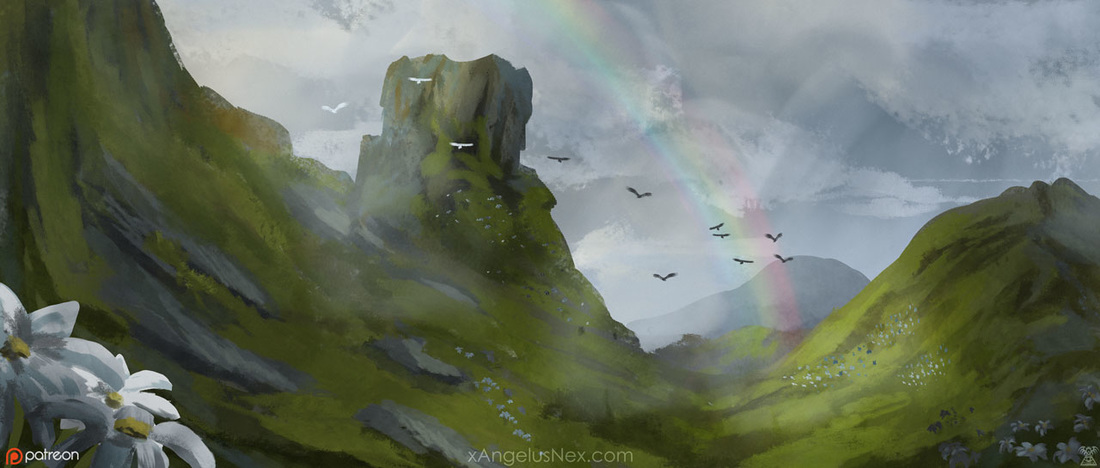
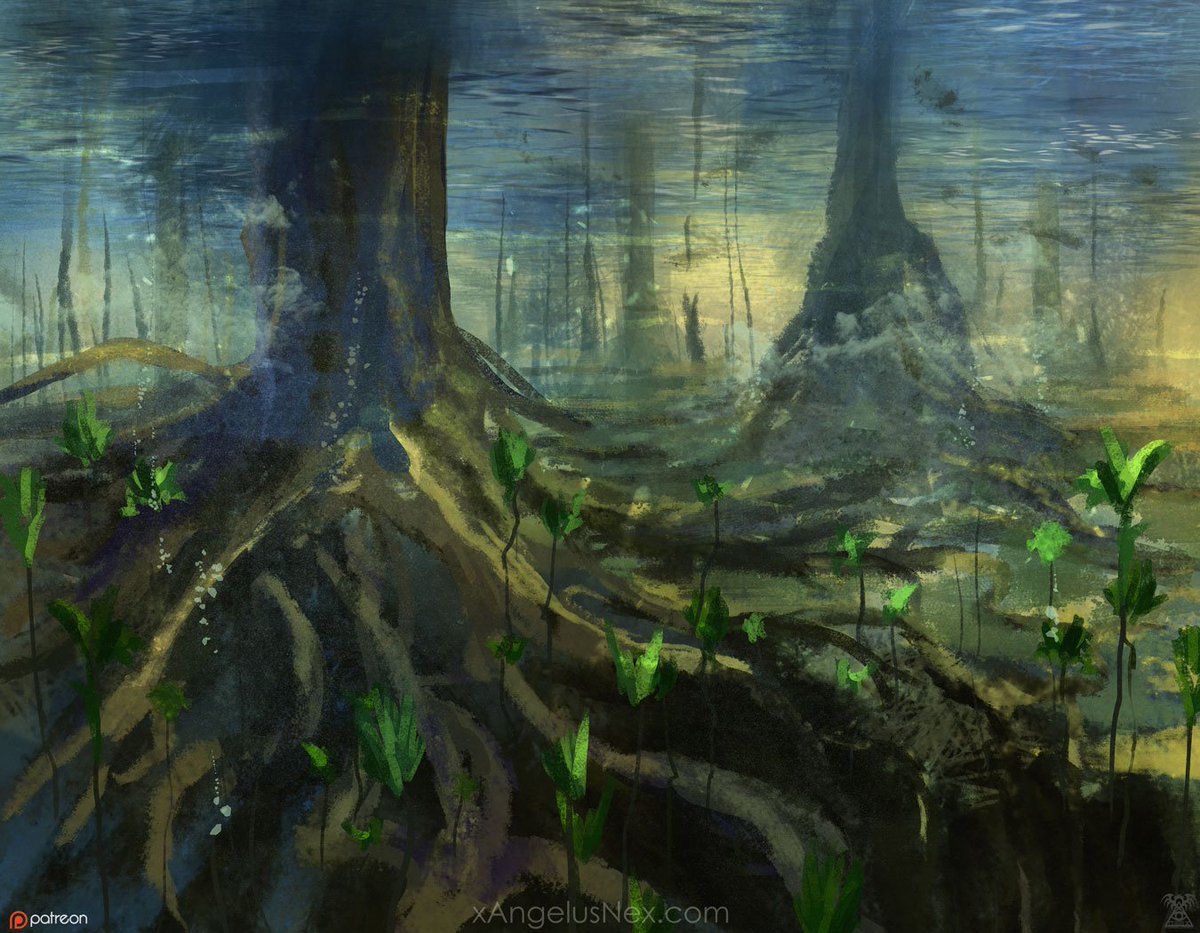
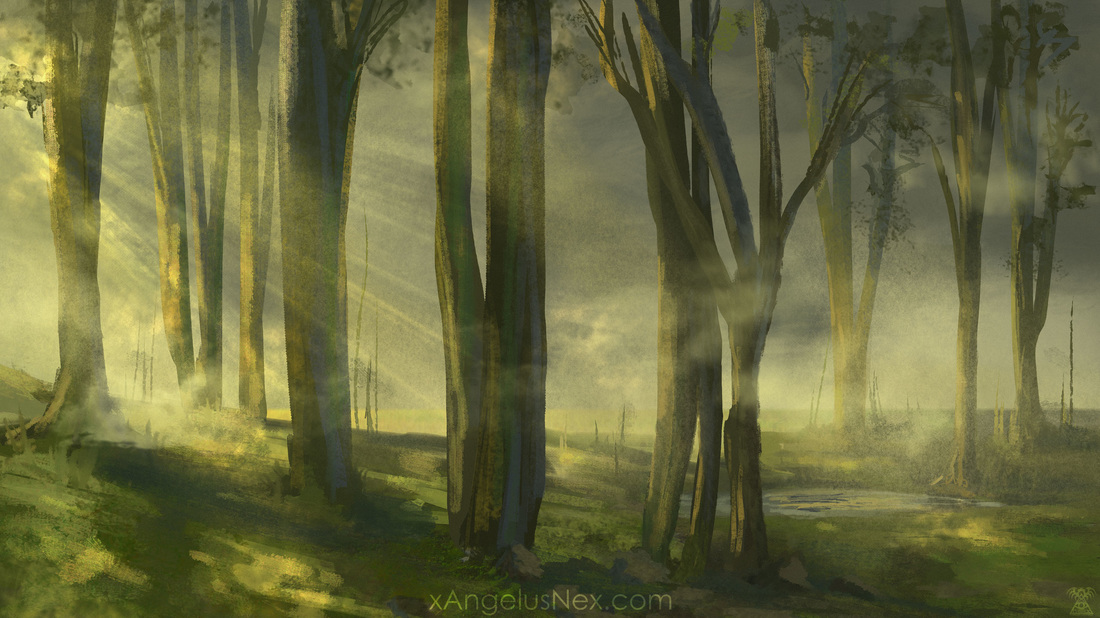
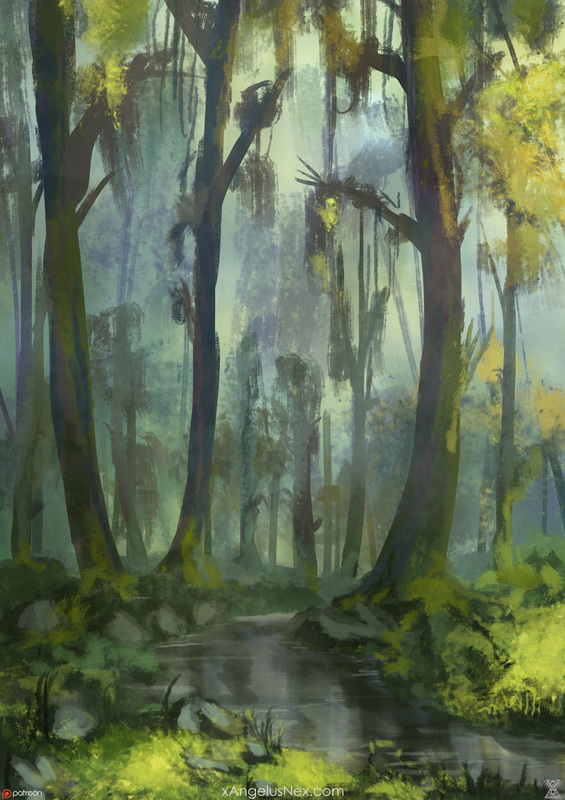



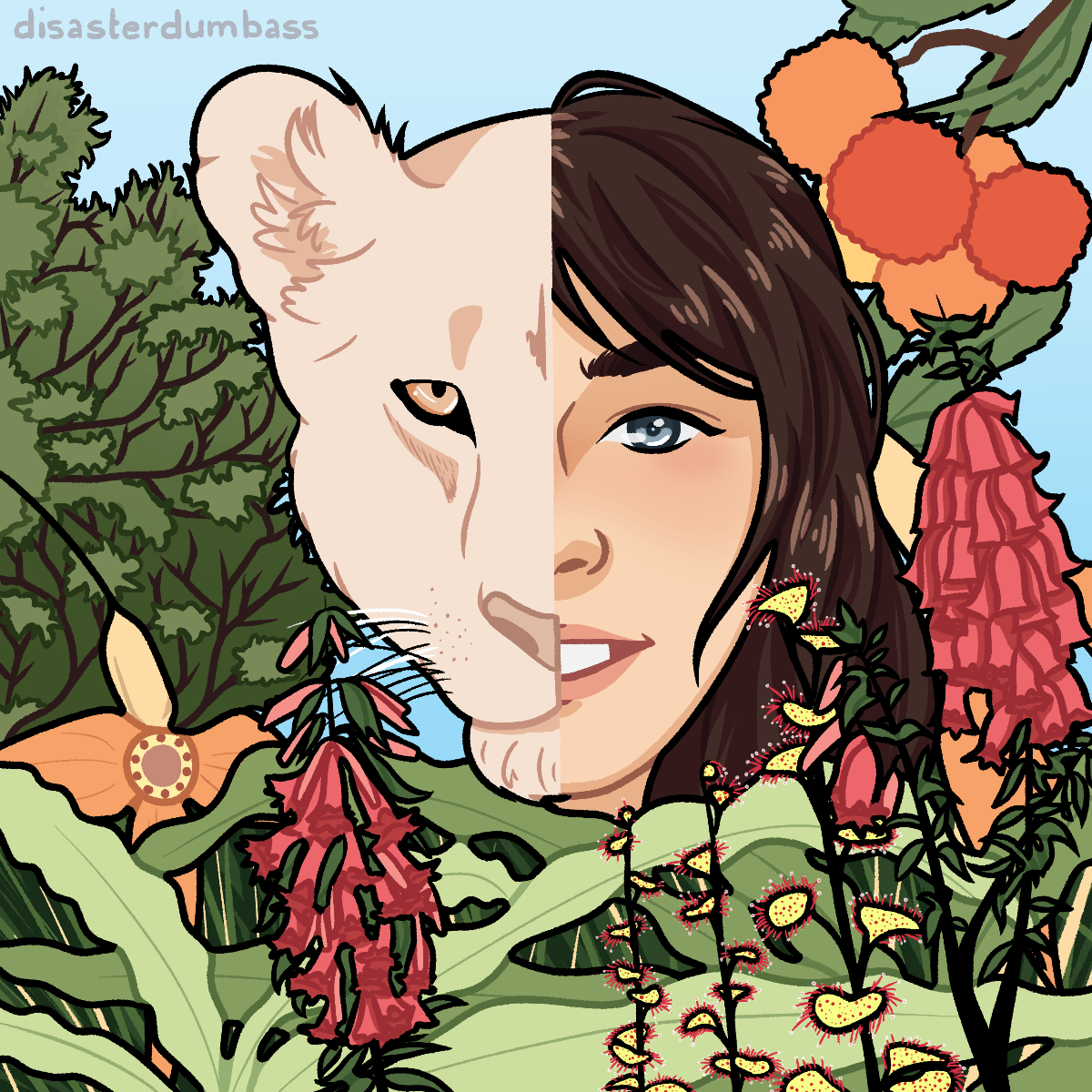
Though most of the article is fairly sober description of the land, you still manage to express how lush the landscape is, and how rich it must feel. Of course, a choice selection of imagery has gone a long way as well. I get the impression of a land like Tierra Del Fuego in South America. I just came back from an island vacation and this makes me want to go back! Such an uninhabited land is bound to have its share of tales and mysteries associated with it. Does this place have any? Something which I think could nicely pad out the sidebar would be a section on some of the local weather patterns and, since I believe this is for a Pathfinder world, perhaps a few articleblock links to local encounters. Am I off the mark to imagine that there must be typhoons and earthquakes in a place like this? Seems like something that could catch a party off guard!
Thank you for your comment. I'm afraid that I'm used to writing science, not fantasy prose, and it's difficult for me to change writing style (but I've got the whole of summer camp to practice!). I do plan for the area to have tales and mysteries. However, gillmen in my world are in a period of change (some would say even of a revolution!). The song I wrote in the article of water moss hints towards this... (https://www.worldanvil.com/w/13-mgatta/a/water-moss-article) However, since this is indeed a Pathfinder world, and it's intended to be played in, I haven't really planned more, as the characters may influence and change events or how the new "tales and stories" become formed. I do have to work on the tales and stories of how gillmen viewed the fire mountain in light of the aboleth's powers. One thing that I've noticed as I write articles for summer camp is that I keep getting ideas for other articles, but I'm trying to stay away from those who cannot be linked to a prompt xD My world is private as well, except for the articles for summer camp, which is why I have avoided linking to articles because otherwise, people cannot access them and it may be a tad disappointing. I had thought about weather patterns, something like heavy monsoonal rains or typhoons, but I want to do further research into the climatology of an area like this before settling for anything specific.